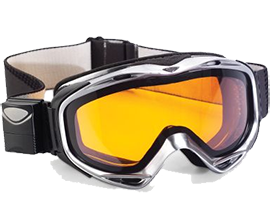
For those of you going to the mountain slopes, you may not realize that sunburn is just as common on the mountains as at the beach. In some cases they’re even worse due to the altitude and reflection of the sun off of the snow. Be sure to wear a good UVA and UVB ray protective sunblock of 30 SPF or higher and reapply it often throughout the day. Always wear goggles or sunglasses that are specific to the very bright conditions on the snow. If you are not careful, you may end up with snowblindness, which is a very painful burn of the cornea. If you have eye pain, seek medical attention immediately.

If you are a snowboarder then the most common injuries in descending order are wrist sprains or fractures, shoulder sprains or dislocations, and ankle sprains. Again, if you fall and experience any wrist, shoulder or ankle pain, seek medical evaluation to rule out broken or fractured bones. Even though you may be able to snowboard despite the pain, this does not mean it is a mild injury. Additionally, you may make it worse by falling again. Try to fall in a curled position with your hands and arms tucked into your chest and land on your back to avoid wrist and shoulder injuries. Be sure to have control of your board and slow your speed when the slopes are crowded to avoid collisions with others.
Beach Injuries
If you are going to a tropical island location with beautiful beaches, you must be aware of the top three injuries: sunburn, cuts and abrasions, and sea life stings. Once again prevention is worth a pound of cure in all of these tropical injuries. Use sunscreen liberally and cover up if you are getting too much sun. Wear water shoes and gloves if you are going to be snorkeling. Enter the water slowly and look around to avoid coral, rocks, sea urchins, stingrays and jellyfish. Do not reach out and touch rocks, coral and sea life. Do not go in the ocean when it is high surf or rough waters unless you are an expert swimmer with good gear to protect you. Most of all do not swim alone.
Cuts and abrasions to the feet and hands occur when snorkelers are pushed by a wave into the coral reef or rocks, or swimmers accidentally step on rocks or sea life. The resulting wounds need immediate medical attention with pain management, thorough cleaning and wound care, antibiotic treatment, and tetanus boosters as indicated by a doctor. Wounds that are not scrubbed aggressively right away can quickly become an infected disaster. Most vacationers do not realize that the warm tropical ocean waters at resort areas are teeming with bacteria, and open wounds need to be kept clean and dry until healed.
Sea urchins have long thin black spines that often cause multiple black puncture wounds of the hands and feet. They are very painful and need to be soaked in hot water for up to 90 minutes to stop the stinging pain, and then the larger pieces of spine can be removed with tweezers. The spine crumbles easily and it is impossible to remove all of it. The smaller pieces cannot be removed, and the black tattoo-looking spots will be slowly absorbed by the body over a few weeks time without scarring.
Stingray spine injuries are more severe, but less common. Stingray venom is also treated with hot water to denature the protein that causes the stinging pain. The stingray spine is sturdy and must be removed. If you shuffle your feet when entering the ocean, you can avoid stepping on a stingray that is hidden in the sand. Be sure to see a doctor for pain control, wound care, and antibiotics to prevent infection.
Jellyfish tentacles can cause terrible red whip-like looking welts that burn. The jellyfish have nematocysts that lodge in the skin and release their toxins when they are rubbed or exposed to fresh water, so ice and hot tap water is NOT good treatment for jellyfish stings. First, apply vinegar or rubbing alcohol on the jellyfish sting for 30 minutes to stop the toxin release and ease the pain. Then the nematocysts can be gently removed with a credit card or a razor, and then vinegar is reapplied. Finally, ice and compression can make it feel better, and antibiotic ointment can be used for any open cuts.
Travel Preparation
Remember that preparation is paramount to a happy trip and be sure to pack the basic necessities for your location. Consider bringing over-the-counter medications for allergic reactions, anti-inflammatory medications for pain and swelling, anti-nausea medications for flying and boating, and a first aid kit to dress small wounds. Also check the www.cdc.org website for travel immunization recommendations. Finally, see your doctor before you leave so you have an adequate supply of all of your routine medications. Your physician can also review other conditions that may apply to your location such as antibiotics for travelers’ diarrhea and sleep aids for changing time zones.
The information provided is for general interest only and should not be misconstrued as a diagnosis, prognosis or treatment recommendation. This information does not in any way constitute the practice of medicine, or any other health care profession. Readers are directed to consult their health care provider regarding their specific health situation. Marque Medical is not liable for any action taken by a reader based upon this information.
